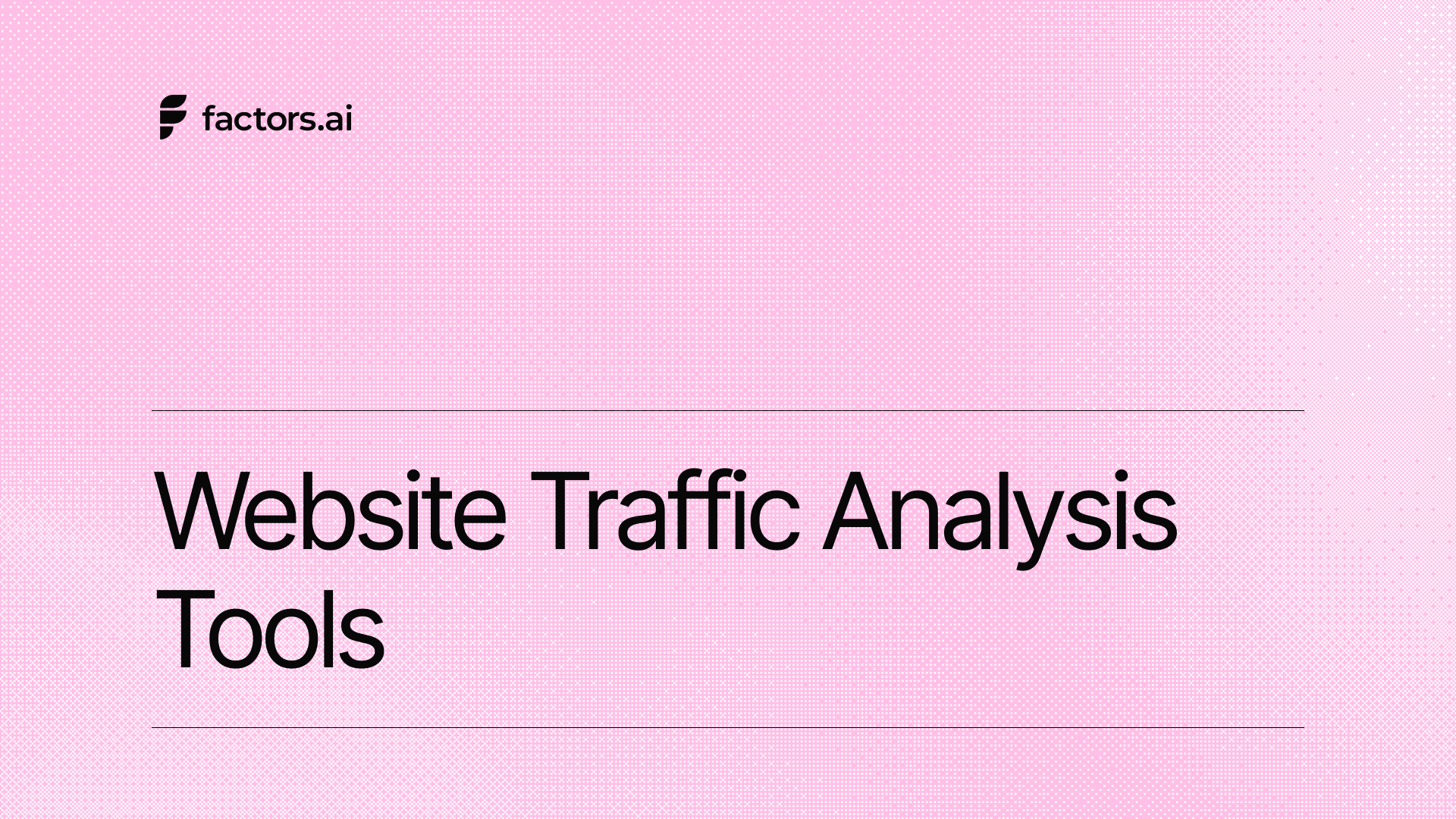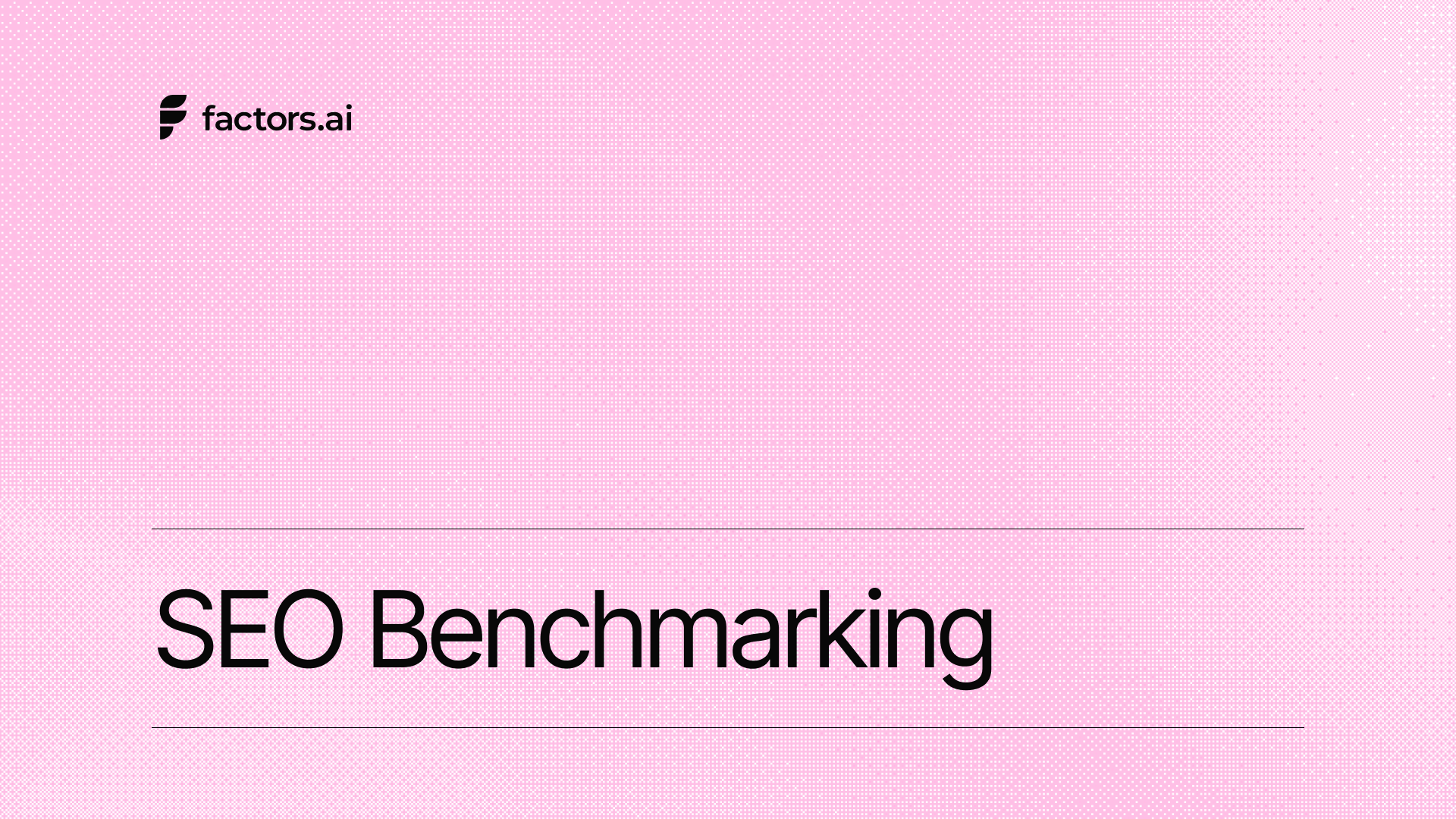I’ve been in digital marketing for a decade. During this tenure, I’ve heard “SEO” being used to describe everything from keyword research to outright witchcraft.
You know, when people say, “Let’s do some SEO and make it rank!” like it’s a magic spell.
So, let’s clear the air.
SEO stands for Search Engine Optimization.
Those three words carry a world of discipline, art, and analytics. It can even occasionally bring you a headache or two.
But SEO is the wall between a business being found or forgotten by the right people.
Let’s talk about that.
TL;DR:
- SEO stands for Search Engine Optimization. It is the process of improving a website’s visibility on major search engines through technical, content, and authority enhancements.
- SEO attracts organic traffic, establishes trust and credibility, and builds long-term ROI. No paying for every click.
- It operates at three levels: Technical (site performance), On-Page (content & keywords), and Off-Page (backlinks & reputation).
- Local SEO helps businesses boost visibility in location-based searches.
- AI & voice search are redefining how users discover brands. It is no longer enough to just optimize for relevant keywords and search engines.
- Tools like Google Analytics, Search Console, and Ahrefs track SEO success. A tool like Factors.ai connects SEO performance directly to revenue.
What Does SEO Stand For?
SEO seems simple enough, but it carries the power to impact every brand’s online visibility.
Before the linguists beat me up…Yes, I know SEO is an initialism, not an acronym.
But in marketing circles, it kinda means the same thing. Please let us live; we have to optimize all day, as it is.
So when people ask, “What does the acronym SEO stand for?” what they really mean is, “What’s behind this mysterious three-letter thing every marketing person keeps mentioning?
In business, the SEO acronym for business or the SEO abbreviation has become shorthand for all the activities that help your brand get discovered online. It covers a wide range of activities, from fine-tuning a website so search engines read it better to creating content that your potential customers actually want to read.
You don’t want to miss knowing about these 5 mistakes to avoid when measuring content marketing ROI.
Imagine your website as a brilliant new restaurant hidden in a quiet street. SEO is the combination of street signs, maps, lighting, and reviews that help hungry customers find it.
Note: It’s more than “SEO = ranking higher on search engine results,”. The real story comes after the search results get you a click.
How do those visitors behave? Which pages do they engage with? Which blogs or landing pages attract the right accounts, not just random page views?
At Factors, SEO is about understanding the buyer’s digital journey and connecting it directly to revenue. We optimize for algorithms as well as outcomes.
Why SEO Matters for Every Business
Most businesses now live online. For them, search engine optimization (SEO) is marketing oxygen.
About 68% of online experiences begin with a search engine.
That means most people who click an ad, follow you on LinkedIn, or read a blog have asked Google a question to get there. If your website isn’t showing up in those results, you’re irrelevant.
I like to think of SEO as ‘digital gravity’ rather than a marketing channel. It pulls the right audience to your brand, whether you're a SaaS company in Bengaluru or a bakery in Belarus.
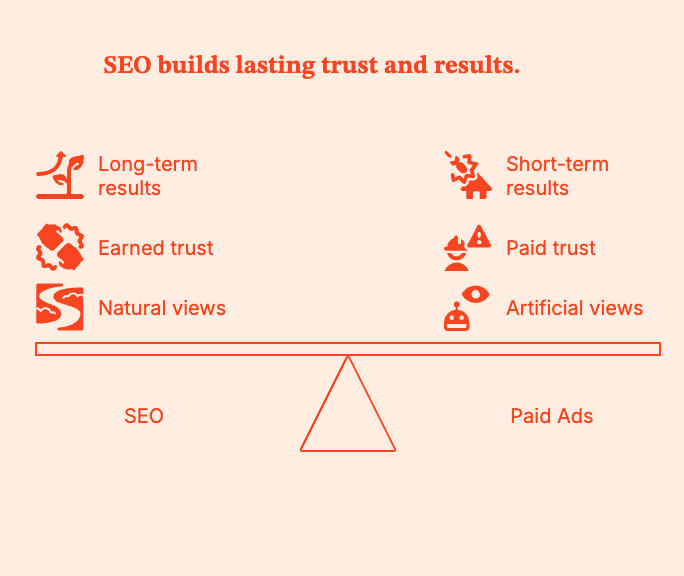
- Unlike paid ads, SEO keeps driving results in the long term. Every bit of optimization, every blog post, every backlink will keep attracting an audience.
Read: Are Google Ads Worth It? Pros, Cons & Considerations
- End-users also trust organic results more than ads, as the former are not paid for. With SEO, you don’t pay your way up on any search engine results page. You earn your spot. And nothing gathers customer trust like authenticity.
- So, “SEO acronym business” is more than a keyword. At the business level, you can’t pay your way to natural views and engagement. Instead, you help marketing and sales teams actually see how search queries can drive traffic that converts (what we do at Factors) from anonymous visitors to qualified leads.
For practically every user-facing business, SEO is a growth engine. It drives sustained, efficient outcomes and often becomes the smartest investment in the marketing budget.
The Three Words That Built the Web: Search · Engine · Optimization
The term ‘SEO’ expands into three words that really hold up the modern web (especially for businesses) as we know it. Search engine optimization is the invisible infrastructure of the internet.
So let’s break down each word for a closer look.
- Search: This is the whole reason the web exists. Forget algorithms; the foundation of the internet is humans with questions.
Every “how to,” “best software,” or “near me” reveals that a future customer is looking for a solution, an idea, or even reassurance that they’re not alone with their problem.
Good SEO starts with empathy. You have to understand what your buyer is looking for. Once you gauge the intent behind the words, you’ve won half the battle.
You need to understand user intent as closely as possible, and these Top 15 Intent Data Platforms to Boost Your B2B Sales should help.
If you’re looking for even deeper intelligence, consider this piece on Intent Scoring via Website Visitor Identification.
Note: If you can provide someone with an answer in the exact moment they have the question, you’re not selling. You’re helping.
- Engine: The “engine” in SEO is basically a top-tier matchmaking system. Search engines crawl billions of pages daily, index them like an ace librarian, and rank them based on which best answers user intent.
You can’t bribe search engines (unless you’re running ads, but they will declare it as a paid ad), but you can earn their trust by playing by certain rules.
SEO engines actually don’t care if you’re a startup or a Fortune 500 giant. If you provide better value and relevance, you zoom to the top.
- Optimization: This is what separates amateurs from pros. Your storytelling must meet science.
You can’t just sprinkle keywords and compress images to get SEO wins. Along with quality content, web pages must be fast, relevant, secure, and actually useful.
Pro-Tip: It's a good idea to take a course or do some research about how search engines work, under the hood. It gives you a serious edge over competitors when tracking and analyzing search engine rankings and algorithmic shifts.
Optimization means refining every digital molecule. This includes metadata, headings, links, load time, and content tone. The goal is to make the experience feel effortless for both search engines and people.
Here’s how to discover valuable insights about your website traffic with Factors.ai.
How SEO Works: The Three Levels You Need to Know
If you ask me, “How does SEO actually work?”, I usually answer, “like juggling flaming torches while riding a unicycle.”
Jokes aside, SEO generally comprises three operational levels: Technical, On-Page, and Off-Page. These constitute 90% of organic growth. The rest is caffeine, and keeping up with Google’s mood swings.
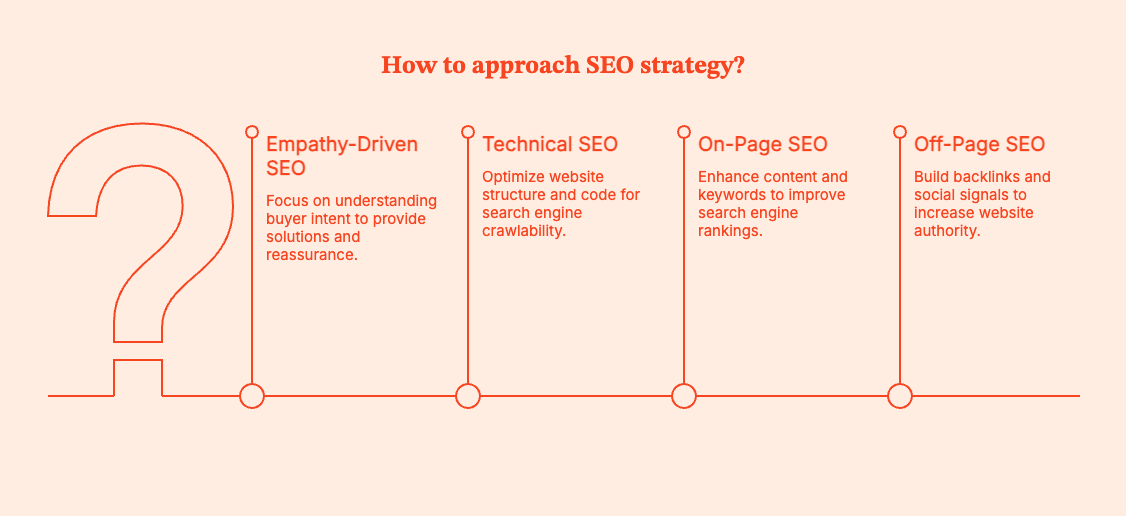
Technical SEO
This is the foundation of your website’s SEO success. The best content won’t work if search engines cannot understand it. That’s where technical SEO comes in.
Here’s what to look for when optimizing technical SEO:
- Crawlability: Can search bots access your pages without hitting dead ends or redirects? Fix broken links, create a sitemap, and keep robots.txt clean to help them do so.
- Mobile-Friendliness: In the second quarter of 2025, mobile devices (excluding tablets) accounted for 62.54% of global website traffic. Your website needs to load fast and work seamlessly on mobile.
- Page Speed: Ideally, your web page should load in 2.5 seconds or less to score well on SEO parameters. Every extra second can cause users to bounce without a second glance.
- Schema Markup: The markup tells the search engine what a piece of content means. It is a standardized vocabulary of code you can add to a website's HTML so search engines really understand what they’re reading.
On-Page SEO
On-page SEO covers content quality, structure, and intent alignment.
- Write for humans, not algorithms. Your content must teach, entertain, or solve a problem.
- Keywords are not scorecards. They are meant to help search engines understand context. Prioritize clarity.
- Treat title tags and meta descriptions like billboards advertising a business on the digital highway. They should be click-worthy without being misleading.
- Use the right hyperlinks to interconnect your web pages with each other. It lets visitors find more relevant content, reduces bounce rates, and increases engagement. Google crawlers also use these links to find related pages, rank them by priority, and gauge link equity.
Off-Page SEO
These are all the actions taken outside the business website to improve its visibility, authority, and credibility in search results. Think of it as your digital reputation.
Largely, it covers:
- Quality backlinks. Don’t chase quantity. A single mention for a respected website matters more than a hundred random directory links from 2010.
- Online references. If folks online are talking about your brand organically, Google realizes that it is more credible.
- Seek (within reason and ethics) social proof in the form of reviews and positive engagement. Users trust brands that other users trust.
To stand any chance at success in the gladiatorial matches (sorry, I meant digital marketing), you have to measure SEO metrics across its three levels…and tie optimization back to ROI.
At Factors.ai, we connect the dots between SEO and business outcomes by highlighting:
- technical fixes that improved organic conversions.
- content pages that delivered qualified leads.
- backlinks that generated new opportunities in the pipeline.
B2B Teams, just starting out on SEO? Here’s a B2B SEO checklist to help you set up and hit the ground running.
Local SEO: Winning Where It Matters Most
Local SEO covers the operations you undertake so that your business shows up for customers in a specific area. For instance, does your website appear in search results when someone types “best coffee near me,” or “B2B analytics firm in Chicago” or similar search intent?
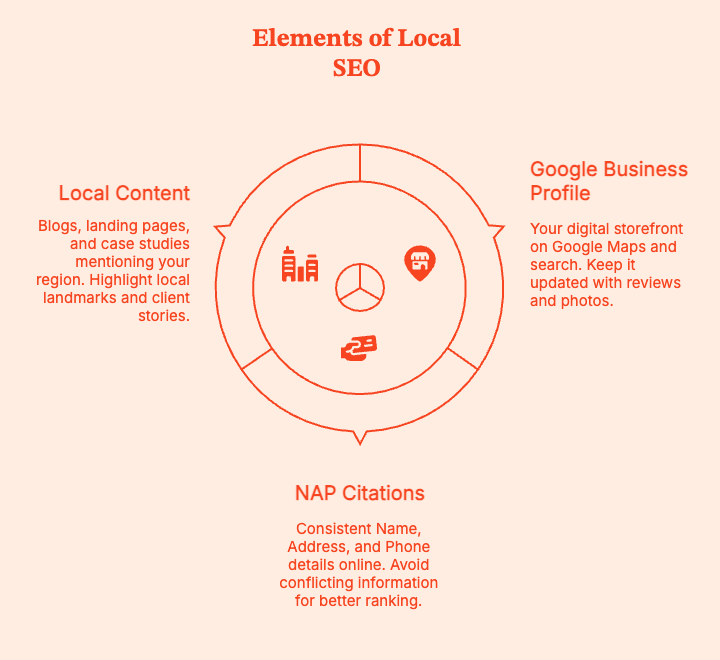
If not, you need more local SEO for your search engine marketing. Here are the basics:
- Google Business Profile (GBP): This is your digital storefront. It shows up in Google Maps, the web, and search engines to describe your business. Users will also see reviews, photos, and directions. Be sure to keep the profile updated.
- NAP citations: This includes details on your Name, Address, and Phone. These should be consistent anytime they show up online. If Google finds three different versions of your address, it will get confused and eventually de-rank your profiles or pages.
- Local content: Create blogs, landing pages, and case studies that mention your region, landmarks, or local client stories.
Local SEO works particularly well for brick-and-mortar stores, service providers, and regional B2B companies that want to capture demand close to their physical location.
At Factors.ai, we map local SEO traffic to account-level signals, so you can see which companies in which regions are engaging. With this insight, you can turn region-based visibility into sales activation.
SEO vs. SEM: How does it impact search results?
A few years ago, whenever I heard someone say, “We’ll do some SEO ads,” I wanted to correct them…with a coffee mug… to their head.
I’m calmer now. Tea helps.
SEO and SEM are related, but not the same thing.

- SEO (Search Engine Optimization) aims to create visibility for a business’s online presence. You refine your website, content, and structure so that search engines (and humans) can find and trust you. And you do this organically, without paying. It’s the very definition of playing the long game.
- SEM (Search Engine Marketing) aims to buy visibility. It involves running paid ads on Google Ads or Bing Ads. These ads show up at the top of search results instantly. You pay per click.
Both are useful tactics, best combined together. SEO builds trust and long-term visibility. SEM drives quick wins and tests which ad copy converts.
Your first time with SEM? You might like our Dummies Guide to Google Ads Management.
With Factors, you can track both organic (SEO) and paid (SEM) touchpoints for a unified funnel view. You can see, for instance, how someone might first discover your brand via a blog post, click a retargeting ad later, and finally convert after an email.
Tools & Metrics: How to Measure SEO Success
You can’t manage what you don’t measure. The right tools and metrics will take SEO from a guessing game to a growth engine.
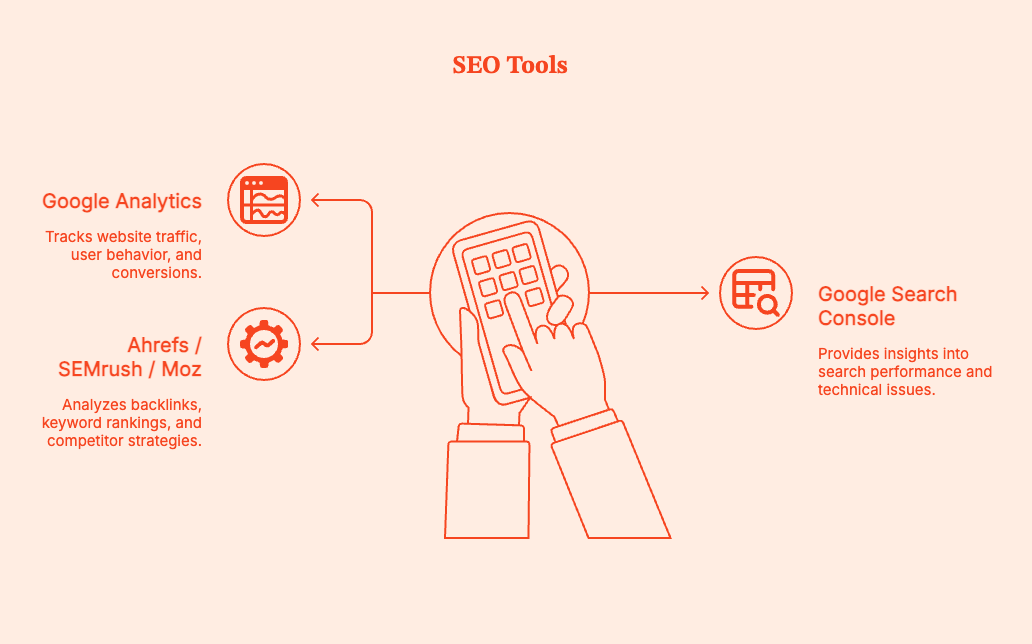
Your toolkit should have:
- Google Analytics: It tells you who’s visiting, where they came from, and what they did next. Link it with goals or events to track conversions from organic sessions.
- Google Search Console: It shows which keywords triggered impressions, what your CTR looks like, and whether technical issues might be blocking Google from indexing any pages.
- Ahrefs / SEMrush / Moz: These tools analyze backlinks, track keyword rankings, monitor domain authority, and study what’s working for competitors.

KPIs that actually matter:
- Organic traffic: Are more people finding you online naturally?
- Click-Through Rate (CTR): Are your titles and descriptions getting enough people to click on them?
- Bounce rate: Are visitors spending some time on your page, or bouncing off within seconds?
- Conversions: Are your organic visitors taking desired actions (sign up, get demo, buy)?
Factors.ai will map organic sessions to account-level data and pipeline outcomes. It will show which keywords and landing pages actually drive qualified leads. Now, instead of just saying, “SEO is working”, you can say, “SEO is directly generating $50K in pipeline this month.”
The Future of SEO: From Algorithms to AI (What It Means for Marketers)
SEO was tricky when all you had to manage was Google shuffling rankings based on keywords and backlinks. Now, search engine guidelines have gone full sci-fi (X-Files theme plays).

Now, we have to manage AI-driven search, voice assistants, and zero-click results. You have to expect that your audience might expect an answer before they reach your website.
Now, you’ll have to optimize for:
- Voice Search: Increasingly, people ask their AI assistants (I like Siri, but Google Home isn’t bad) questions like “What’s the best CRM for B2B marketing?” . Your content needs to sound human, not robotic. You need to write in the same way people talk.
- AI-Generated Summaries: Google’s AI Overviews now surface synthesized answers to questions on the results page. As a result, ranking logic has changed. You must aim to be cited or featured in AI summaries.
- Mobile-First Indexing: This isn’t new, but many brands still treat mobile optimization as an afterthought. Big mistake.
AI SEO is redefining what optimization means. Search engines aren’t just matching text. They can now interpret intent and context. To meet these standards, content and web page optimization have to be clearer and more structured than ever before.
More AI content also means that readers will have more trust issues around the authenticity of results. You have to work harder to establish the credibility needed for organic search traffic.
The Takeaway
Great SEO still comes down to this: create something genuinely useful, make sure people can find it, and measure the results obsessively.
SEO powers visibility, trust, and quantifiable ROI. It can help startups outshine industry giants, and local businesses dominate their competitors. When done right, SEO can be the most compounding investment in digital marketing. Each optimized page, backlink, and piece of content builds on the last.
At Factors, we focus on turning SEO into a revenue engine. We connect organic performance to pipeline, qualified accounts, and closed revenue.
In a nutshell… what does the acronym SEO stand for?
SEO stands for Search Engine Optimization. It covers all activities undertaken to improve a website’s visibility on popular search engines (Google, Bing).
These refinements help the right audiences find your brand/business naturally without paying for attention or clicks.
At its core, SEO focuses on three levels:
- Technical SEO: Checking that your site is fast, secure, mobile-friendly, and easy for search engines to crawl.
- On-Page SEO: Structuring content, meta tags, headings, and keywords to match user intent.
- Off-Page SEO: Generating trust and authority through backlinks, brand mentions, and social signals.
SEO drives organic traffic, improves brand credibility, and reduces customer acquisition cost (CAC). It delivers compounding returns. Every optimized page will continue to draw in qualified visitors long after it’s published.
Marketers must also account for Local SEO for geographic searches. They also have to optimize for AI-driven SEO, where voice queries, zero-click results, and LLM-powered search engines help people discover information.
It is essential to optimize for both humans and algorithms.
Measuring SEO success must cover the following metrics: organic traffic, CTR, engagement, and conversions. Factors.ai lets marketers connect SEO-driven sessions directly to revenue, closely measuring business impact.
SEO is a strategic growth lever. It helps your business show up when it matters most, build trust over time, and turn discovery into demand.
FAQs for what does Search Engine Optimization stand for
Q. What does SEO stand for in marketing?
SEO stands for Search Engine Optimization. It refers to the process of improving a website’s visibility in search engines. SEO techniques cover technical, on-page, and content improvements…with the intent to help your brand show up when potential customers are looking for answers.
Q. Is SEO an abbreviation or an acronym?
Technically, SEO is an initialism (each letter is pronounced separately). But in business and marketing circles, most people call it an acronym. Grammar purists, just breathe through the pain.
Q. What are the different levels of SEO?
There are three primary levels:
- Technical SEO: The foundation. Covers site speed, crawlability, and structure.
- On-Page SEO: What’s on your site. Includes content, keywords, and meta tags.
- Off-Page SEO: What’s off your site? Covers backlinks, authority, and reputation.
Q. How does SEO impact business growth?
SEO drives organic visibility, which brings in qualified traffic. It reduces Customer Acquisition Cost (CAC), and creates long-term brand equity.
Q. Can SEO be measured in revenue terms?
100% yes.
Platforms like Factors.ai will link SEO-driven traffic and content engagement to pipeline and conversions. Marketers can now use real numbers to prove measurable business impact.
.svg)



